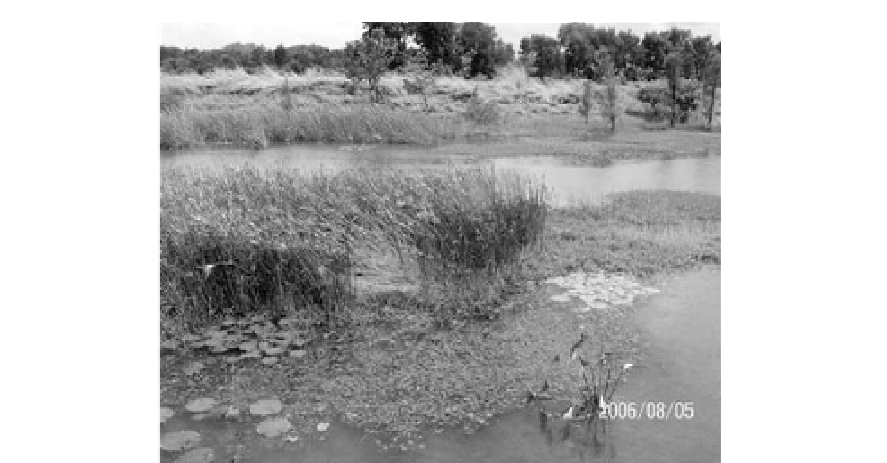Environmental Engineering Reference
In-Depth Information
Fig. 10.15
A stream functions as a source providing organisms, energy, or materials to the surrounding landscape,
and also as a sink absorbing organisms, energy, or materials from the surrounding landscape
10.1.5 Dynamic Equilibrium
Even in the absence of human disruptions, the ecological characteristics of stream corridors, although
consistent, are naturally and constantly changing in their structure, processes, and functions. Streams
corridors show a dynamic form of stability. Stability is regarded as the capability of a system to prevail
within a range of conditions. This phenomenon is referred to as
dynamic equilibrium
.
For a dynamic equilibrium to be preserved, the stream ecosystem must have an active series of
self-correcting mechanisms. External disruptions and stresses may be moderated within a certain range
of responses, by the ecosystem through these mechanisms, thus, preserving a self-sustaining condition.
The threshold levels associated with these ranges are difficult to identify and quantify. If these levels are
exceeded, the system can become unstable. A new steady state position may take a long time to become
established, however this may be done if the stream is subjected to a series of adjustments.
Once the source of a disturbance is controlled or removed, a stream system can return to its working
condition in a reasonable amount of time. The fact that ecosystems restore themselves after the removal
of external stresses allows passive restoration. Removing the stress and allowing the ecosystem to
recover by itself is an economical and effective method (see Chapter 9 for an example of ecosystem
recovery after ammonia toxicity is reduced). However, following a profound disruption and alteration,
the time needed for a stream corridor to heal itself could be several decades.
Even if a stream system does recover to equilibrium, it will be very different from before, and its
ecological value may be greatly decreased. When an analysis by restoration practitioners shows that the
recovery time will be long and questionable, they may decide that the use of active restoration techniques
to reestablish a more operable channel form and biological community in a short time, may be viable.
There are many difficulties with active restoration. Planning, designing, and implementing methods to
regain the original state of dynamic equilibrium correctly are great challenges.
In some cases a disturbance may have such a great effect that the system may not be capable of
recovery. In which case the stress must be removed and active restoration may be applied by repairing
damage to the structure and function of the stream ecosystem. A stable ecosystem must have a combination
of resistance, resilience, and capacity to recover. If it can keep its original form and functions, then it is
resistant. The rate at which the ecosystem returns to its original form is known as its resilience. The

Search WWH ::

Custom Search